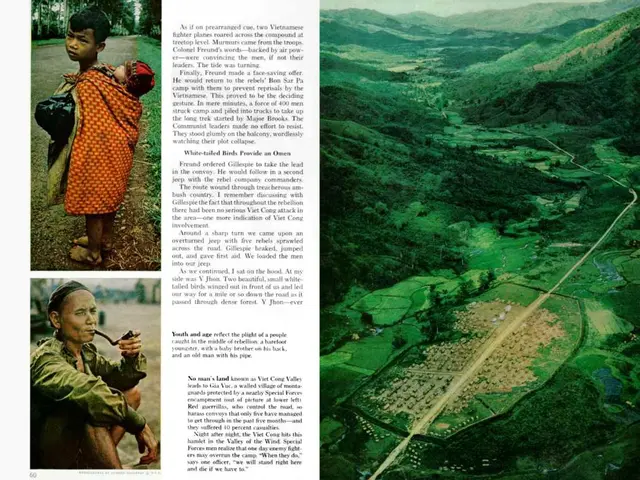Flooding Crisis in Mae Sai, Chiang Rai: Prime Minister Addresses Toxic Substance Concerns
Prime Minister initiates prompt water testing in wake of Mae Sai flooding crisis
Recent flooding in Mae Sai District, Chiang Rai Province, forcing evacuations and raising concerns about the potential presence of toxic substances in the floodwaters. In response, Prime Minister Paetongtarn Shinawatra has taken action, voicing her concerns on her personal Facebook and X accounts and instructing relevant authorities to assist the affected communities and address public worries about contamination.
The flooding, initially triggered by heavy rains, was exacerbated by water flowing from Myanmar into Mae Sai near Wat Phromwihan, as mentioned by Prime Minister Paetongtarn. Consequently, she has instructed Deputy Prime Minister and Interior Minister Anutin Charnvirakul to immediately provide aid to the affected communities.
Recognizing the need for further investigation, the Prime Minister has also ordered the Public Health Ministry to visit the area and collect water samples for testing. This action is aimed at alleviating public fears about the presence of toxins in the water and ensuring the safety of those involved.
Due to concerns about waterborne diseases such as arsenic contamination, officials have set up four temporary shelters at Mae Sai Municipality, Wat Phromwihan, Municipal School 1, and Mae Sai District Hall. Moreover, four environmental monitoring centres have been established in Chiang Rai to monitor water quality and provide updates to the public.
It's crucial to note that preliminary surface water quality tests have revealed high levels of arsenic and lead in the Sai River and parts of the Kok River in Chiang Rai Province[5]. Meanwhile, the water flowing from Myanmar is suspected to carry toxic substances that have prompted tests by the Public Health Ministry.
Furthermore, efforts are being made to collaborate with neighboring countries to address cross-border pollution, which could contribute to the contamination issue. As the situation evolves, continuous water quality tests are being conducted, and a unified public communication plan is in place to provide consistent information and restore public confidence[3]. Additionally, sediment-trapping weirs are being constructed in high-risk areas to mitigate future contamination, and NGOs have joined forces to investigate the contamination of the Kok and Sai rivers.
Apart from the flooding in Mae Sai, the ongoing issues in Thailand include:
- Thai Feed Mills Halt Corn Purchases Amid GMO Import Controversy
- Foreign Ministry affirms measures to cut electricity, internet to Cambodia remain
- Aranyaprathet border checkpoint crowded on Monday morning
- Central herbal raw materials market opens to promote Thai herbs
- Increased rainfall and heavy downpours forecast across Thailand from June 9-23
Stay informed about the developments surrounding the floodwaters in Mae Sai and the ongoing efforts to ensure public safety.
Scientists and environmental experts are closely monitoring the Sai and Kok rivers for potential contamination, given the high levels of arsenic and lead detected in preliminary tests.
The ongoing flood crisis in Mae Sai, Chiang Rai, has shed light on the intersection of health, science, and environmental issues, prompting calls for collaboration with neighboring countries to address cross-border pollution.
As Thailand grapples with the flooding in Mae Sai, wider political and general news concerns include debates about GMO imports, energy policies, and border control, indicating the complex web of factors influencing the region's health and wellness.








